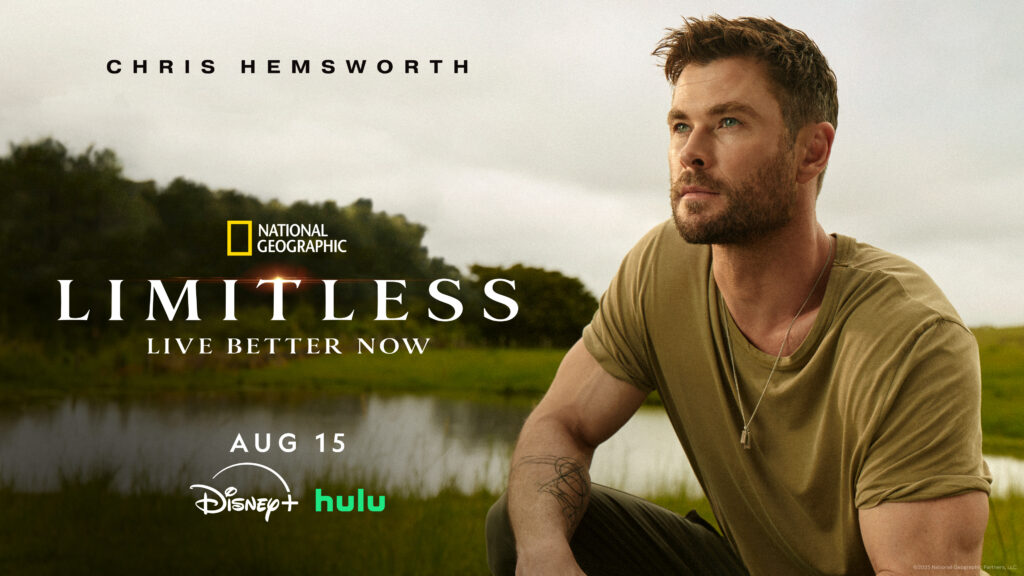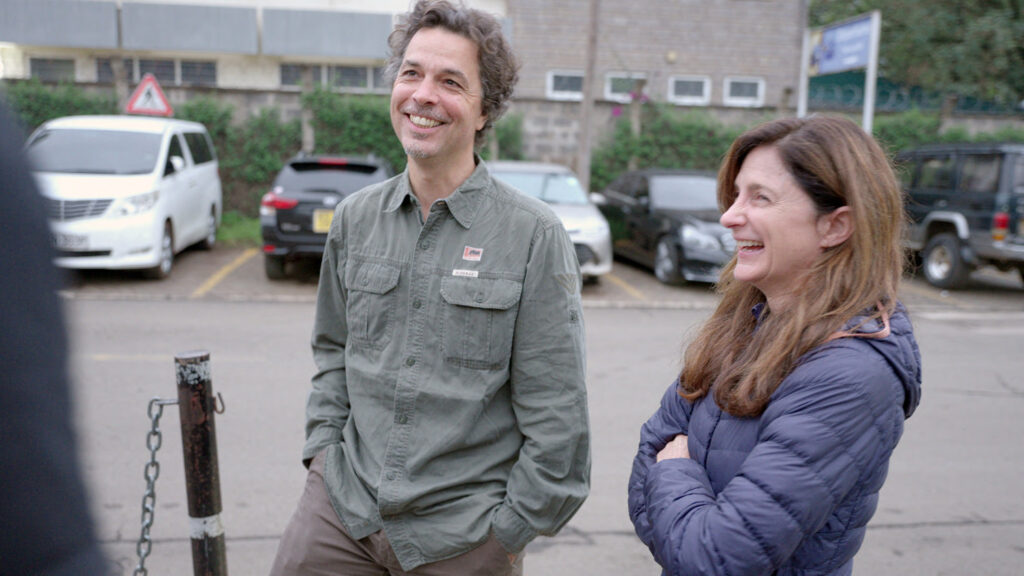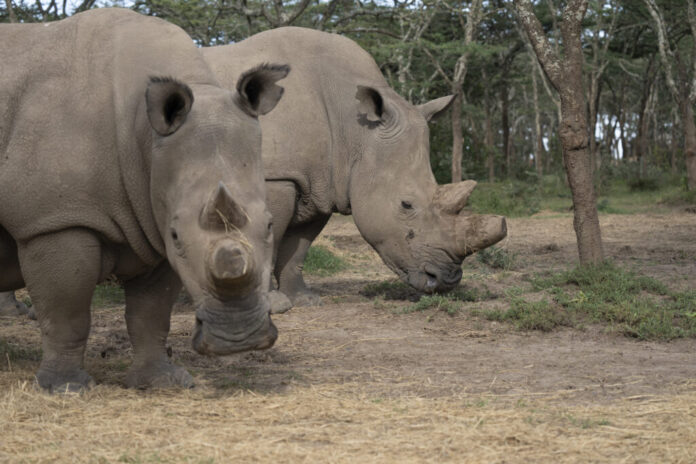The Last Rhinos: A New Hope premieres on National Geographic on August 24, then streams on Disney+ and Hulu on August 25. In this hopeful but tense film, photographer Ami Vitale follows a global effort to save the Northern White Rhinoceros, one of the most endangered species in the world, from extinction. With only two surviving females, a team of scientists rushes to create the world’s first surrogate rhino pregnancy. The fate of the species now rests in the hands of their teams.
The last two Northern White Rhinos remaining in the world are mother and daughter. A desperate team of scientists are trying to resurrect the species before it’s gone forever using in vitro fertilization (IVF).The procedure, combining eggs and sperm in a lab then inserting an embryo into the rhino’s uterus, is risky and success is uncertain. At least it provides hope.
Jan Stejskal, the Director of BioRescue, traveled with photographer Ami Vitale to Ol Pejeta in Nairobi in a race against time to transfer Northern White Rhino embryos from a lab in Italy. Innovation & Tech Today held an exclusive interview with Jan Stejskal, learning about his team’s efforts on and off the camera as BioRescue urgently tries to thwart the species’ extinction.
This interview has been edited for length and clarity.
Innovation & Tech Today: What is BioRescue’s mission?
Jan Stejskal: Utilizing novel approaches in artificial reproduction in general, with the case of a Northern White Rhino at the moment. We believe that the techniques, technologies, and protocols that we have developed might be used in [the] future for saving other species.
I&TT: How did the BioRescue team come together?
JS: In 2014, we first started in a European zoo. Five continents came together [from] different organizations in 2015—America, Europe, Asia, Australia, and Africa. By 2016, things took root.
I&TT: What is your role as Director at BioRescue?
JS: I’m coordinator—formally principal investigator for the part of the research that we do in Kenya. So I organize the procedures in large cooperation with all the partners that are named under the brand of BioRescue. I’m responsible for all the strategical discussions. I remind my colleagues that we have to focus on a step by step approach, because if you think too much about too many things, then you have done nothing. I would say that I make space for my colleagues to work.
I&TT: What is your area of expertise?
JS: I’m an anthropologist by degree. You have to understand that people have different expectations. They sometimes have different interests. They have a completely different cultural background. We have top scientists from very rich countries in West, but we work with really local people on the ground in Kenya. You have to try to get all of these participants together in a way that it will work.

In episode 2, titled “Pain”, hospice and palliative medicine physician BJ Miller took real care so that anything Chris had to endure was shy of toxic or injurious as they dialed up the intensity of the pain. Continue reading
I&TT: When did these innovative research efforts first take root?
JS: In 1975, the breeding efforts were born in a zoo. In the 80s, collecting urine to see whether they improve breeding. More advanced techniques, from 2001, started [in] Berlin. Artificial insemination of rhinos, hormonal implants in rhinos.These would be early techniques of artificial reproduction. After we found out that none of the females [are] able to carry pregnancy, we organized a meeting in Vienna, we invited colleagues from other institutions, and there we wrote kind of map how to save the white rhino. In 2016, it was published in zoo biology.
I&TT: What new risks and ethical questions are systematically analysed and discussed in the BioRescue project?
JS: When you’re dealing with endangered species, if something goes wrong that extinction is essentially in your hands. That’s the primary risk. The techniques that we use with the Northern White Rhinos [must] be deployed safely. Every procedure poses a risk to the animal. You cannot justify anything because of saving a species, ignoring animal welfare. With females, it can be demanding for them. That’s why we check them very often, we work with the top vets so anesthesia is absolutely smooth because otherwise, it might be very dangerous for the animal. We ensure they are safe and comfortable.

I&TT: Describe the mixed emotions felt by you and your team in these efforts.
JS: Every day, I try to keep the team as calm as possible. Because if you feel too much pressure, you might do mistakes. On the other hand, every time we do the procedure, the feeling is different. You sleep differently, you speak differently, you somehow feel that this is an extraordinary procedure. It does not get routine. You try to compose yourself, you try to focus on what you need to do, but on the other hand, you feel that this is a very special thing.
I&TT: What is morale like at BioRescue knowing what you are up against?
JS: I feel pride for the team that we work with. I really appreciate the efforts of all my colleagues and commitment to work in such a large group. You actually have to step a little bit back and not to pursue only your interests. And this is something I really appreciate with all my colleagues because this feeling of cooperation and joint commitment to the cause [help] to get as far as we are now.
I&TT: When did you team up with Ami and National Geographic for the documentary?
JS: We actually teamed up [with Ami] in 2009. Since then, she has been following the story of the Northern White Rhino. So it kind of came natural because in 2019, there was this very famous image of a Sudan rhino with a zookeeper that was on the cover of National Geographic. It came actually very naturally that it would be National Geographic that would be documenting the story. Around 2020, during COVID, we started to discuss with National Geographic to get a little bit more involved. It would be Ami that would be narrating the story, explaining to audiences what is happening. It was quite natural because she has been with us for a while.
